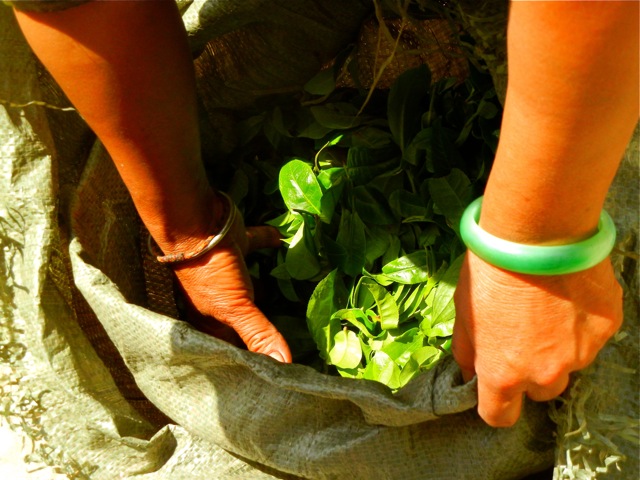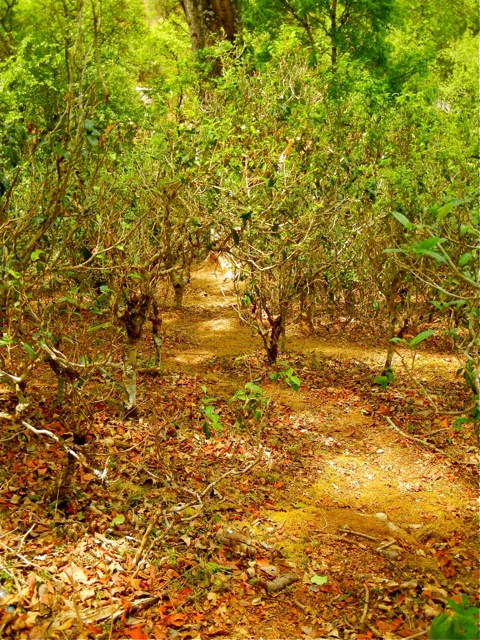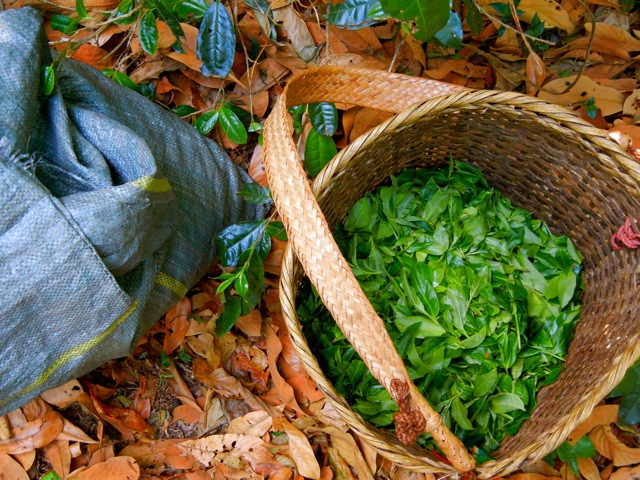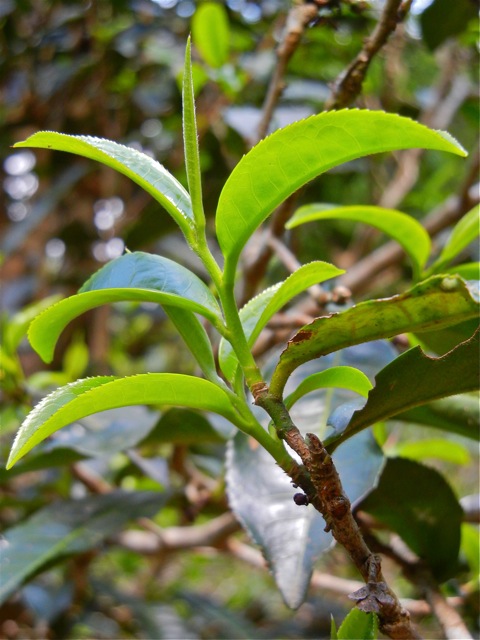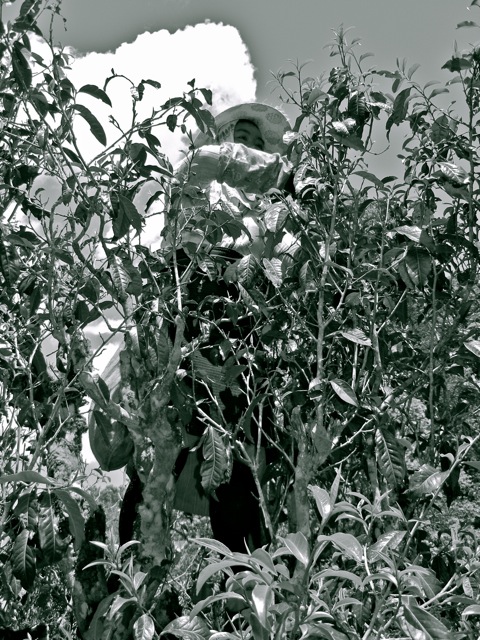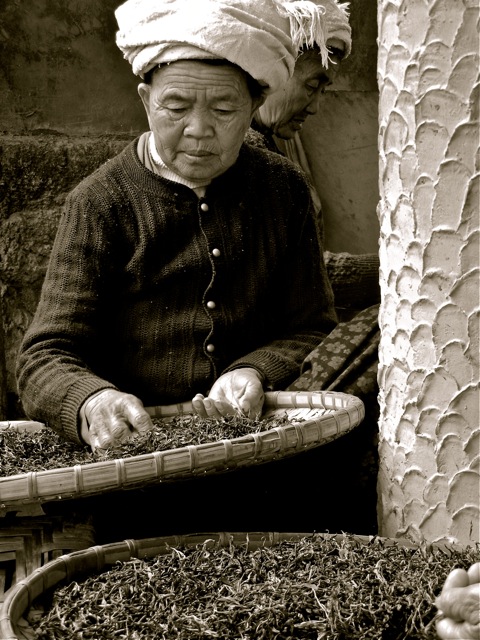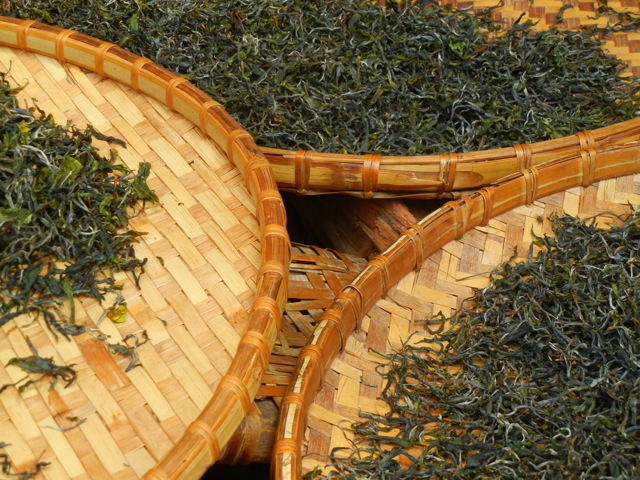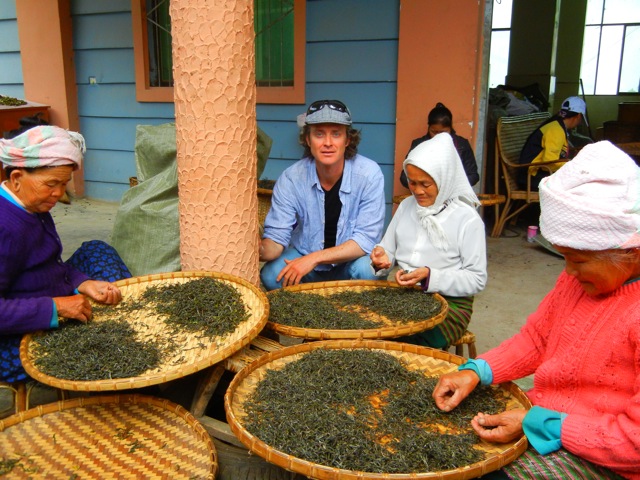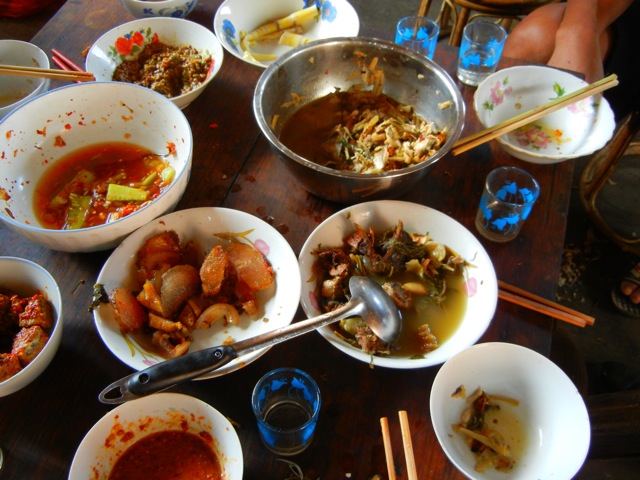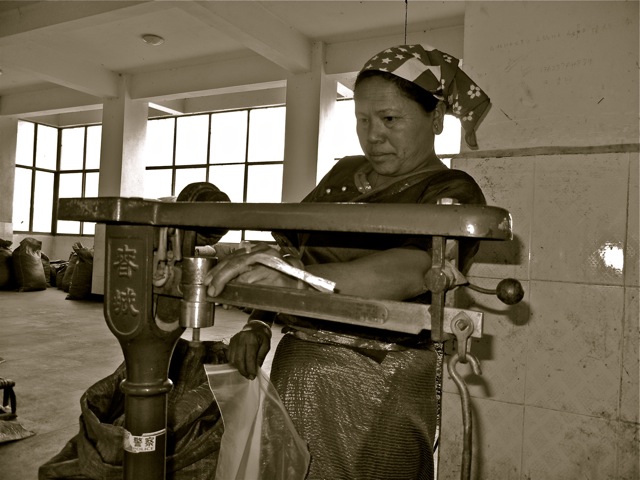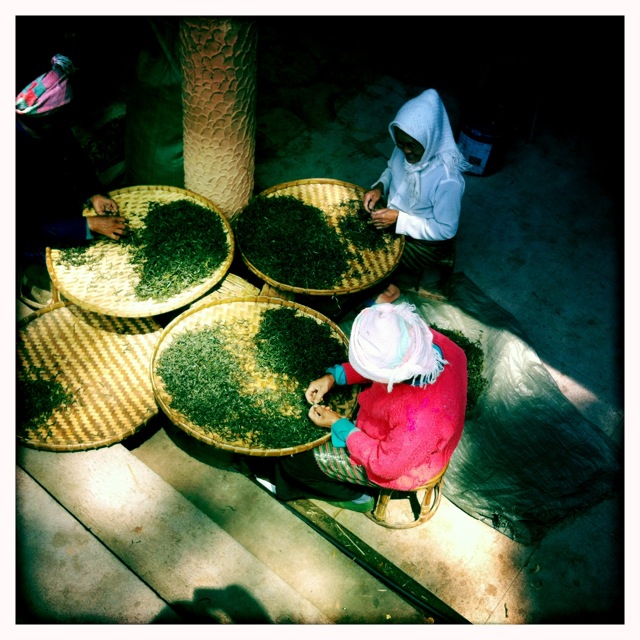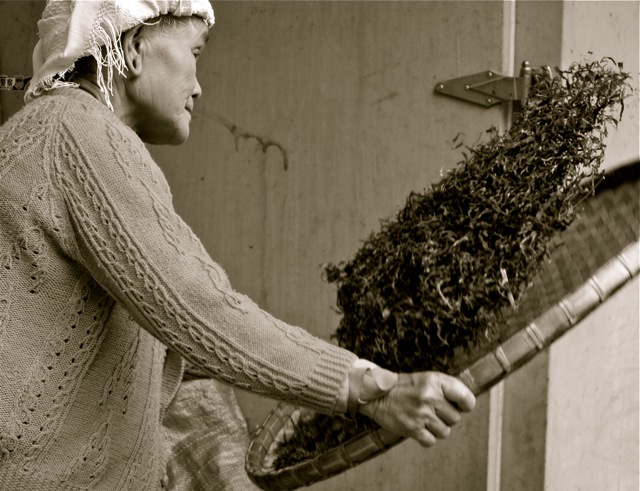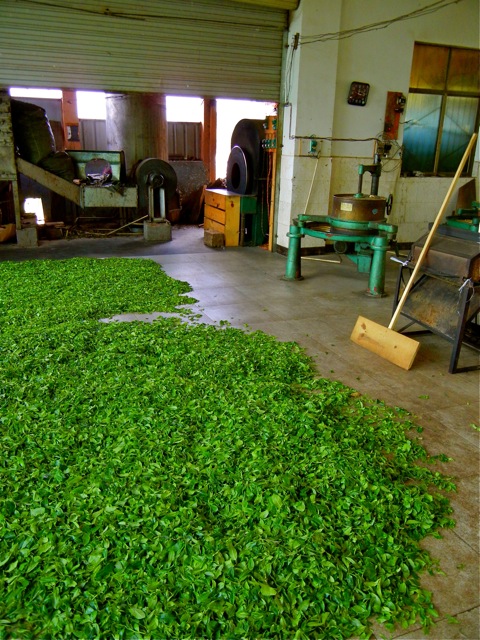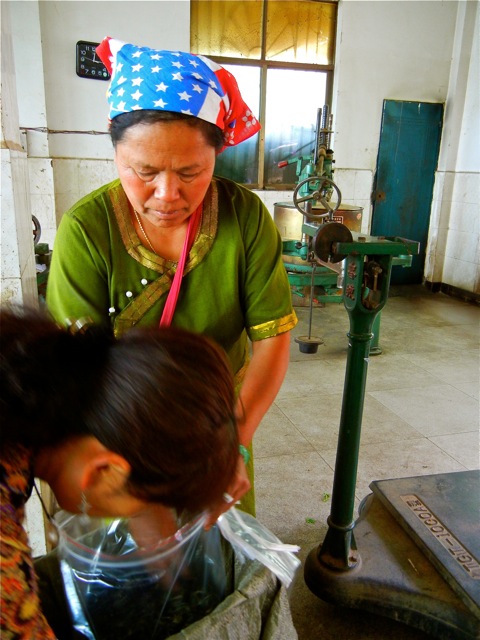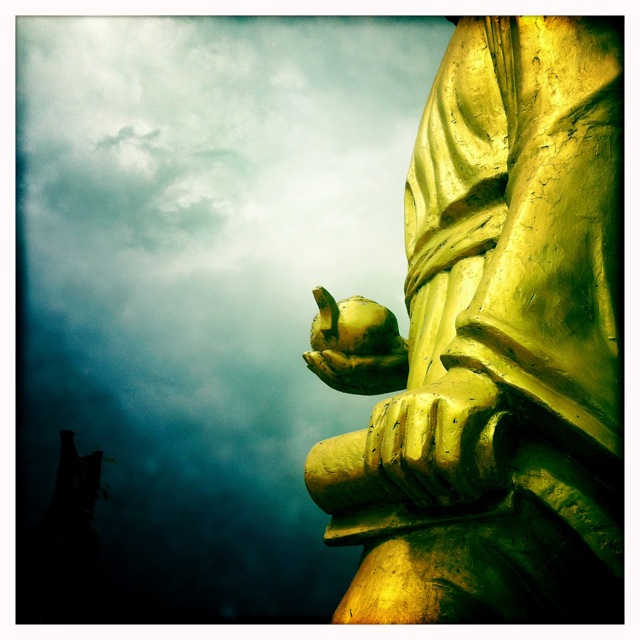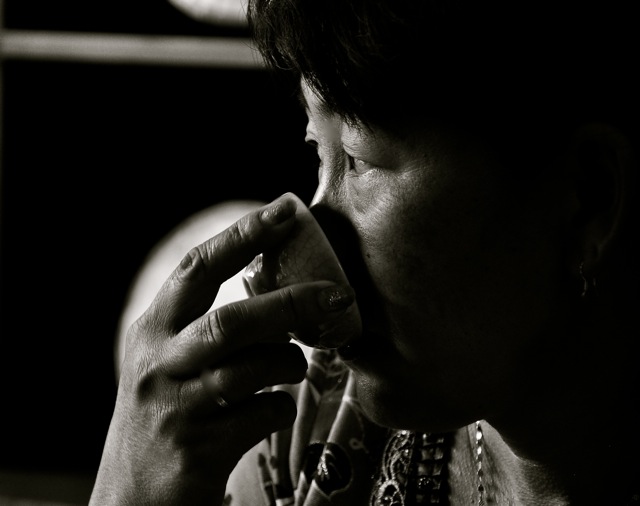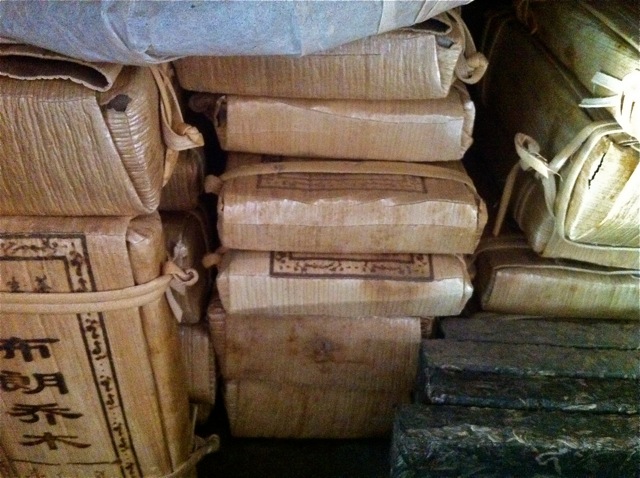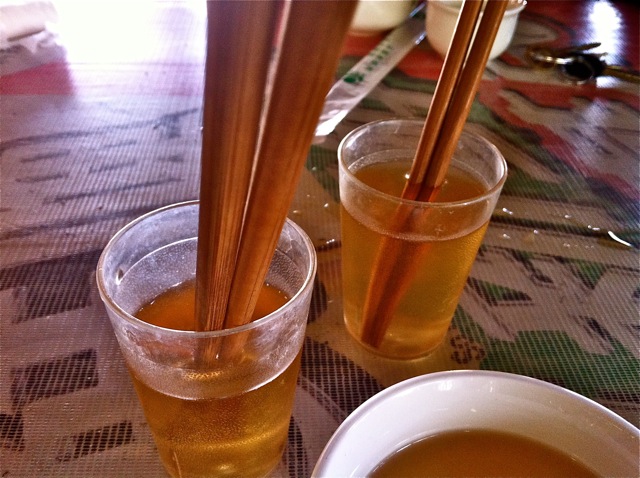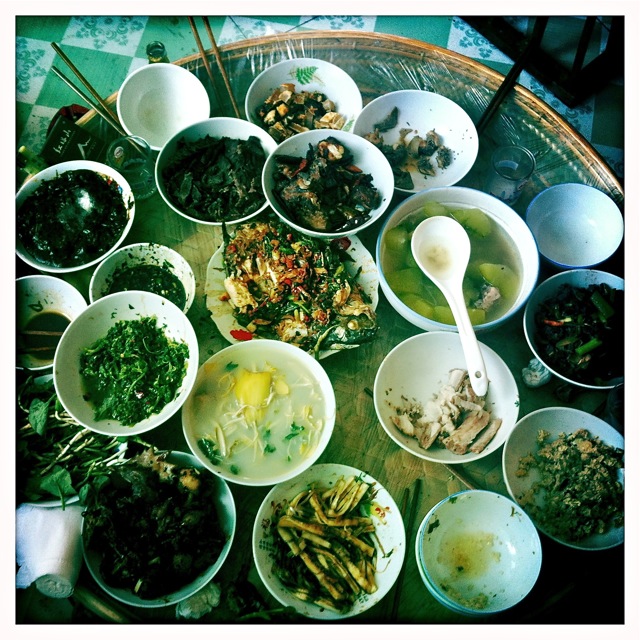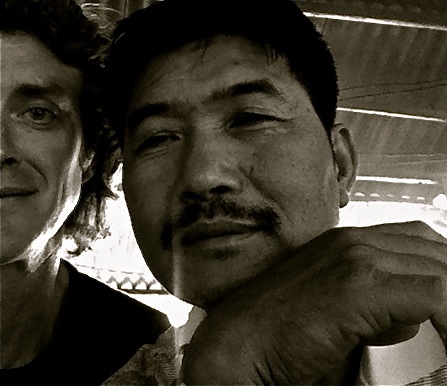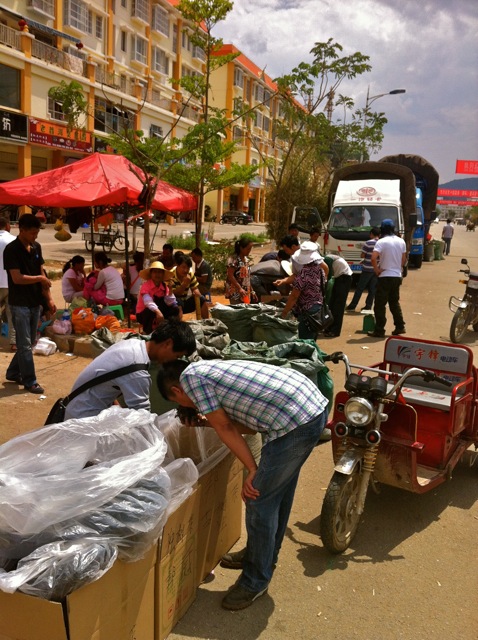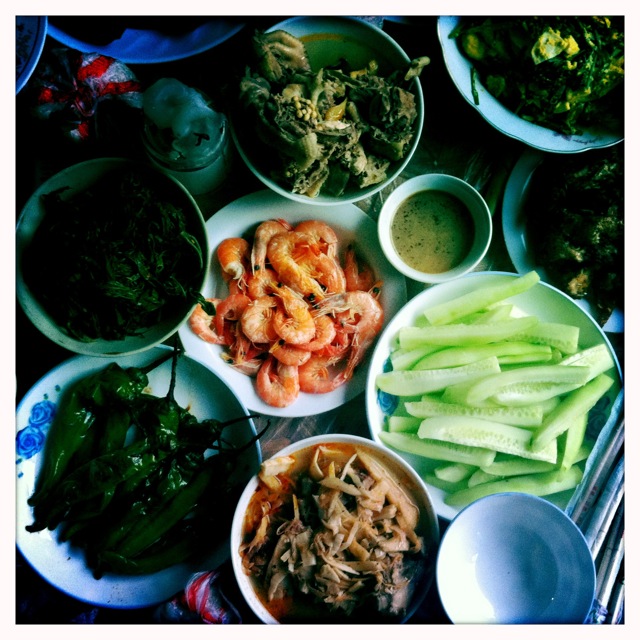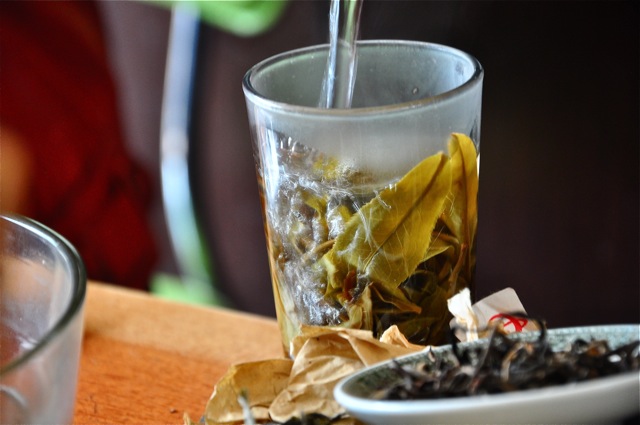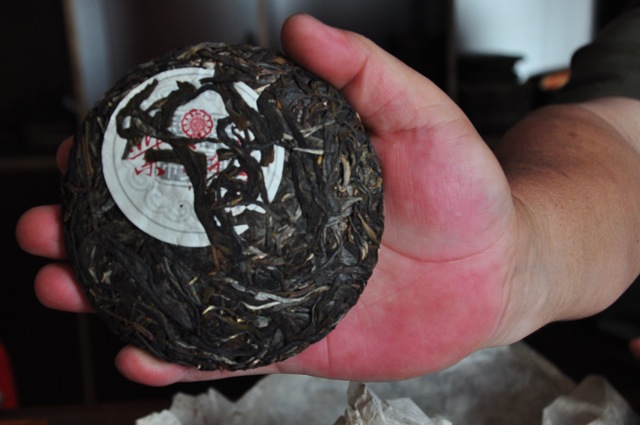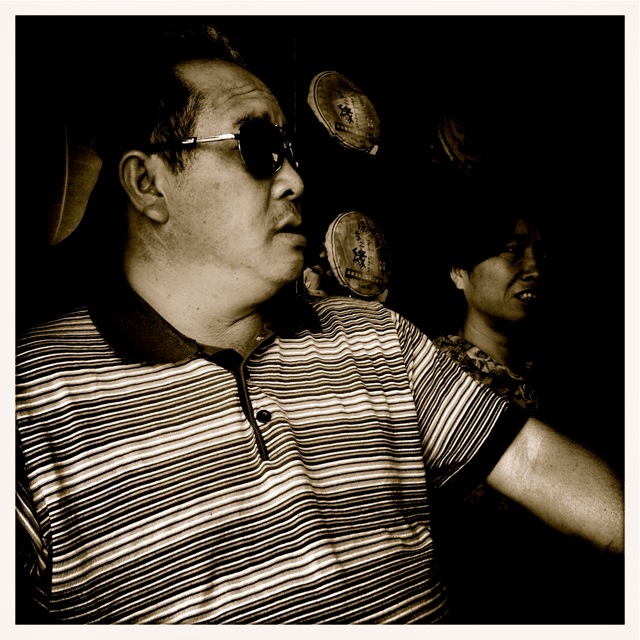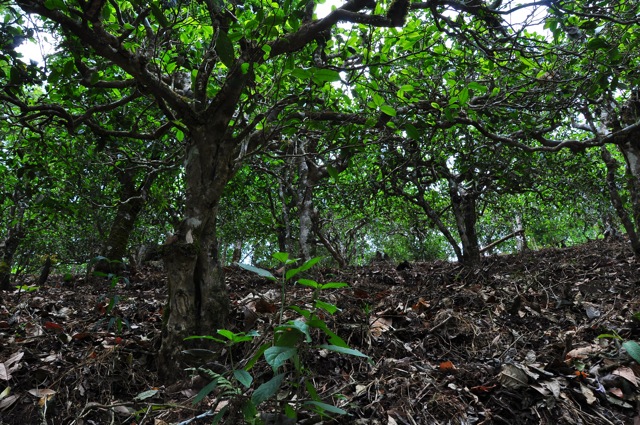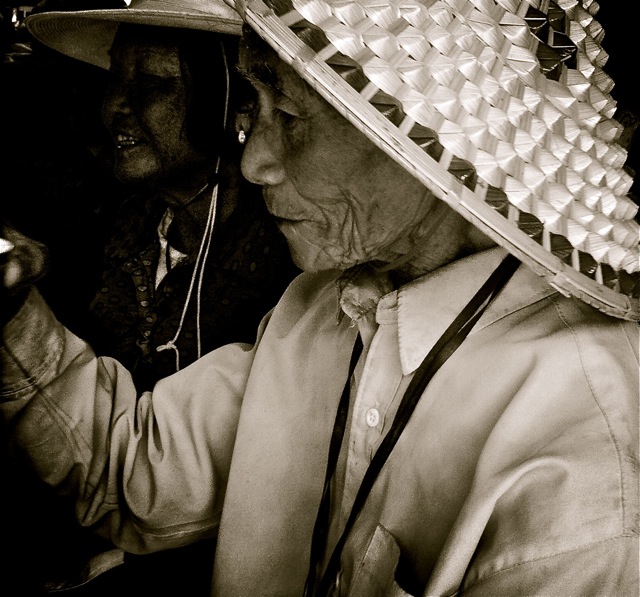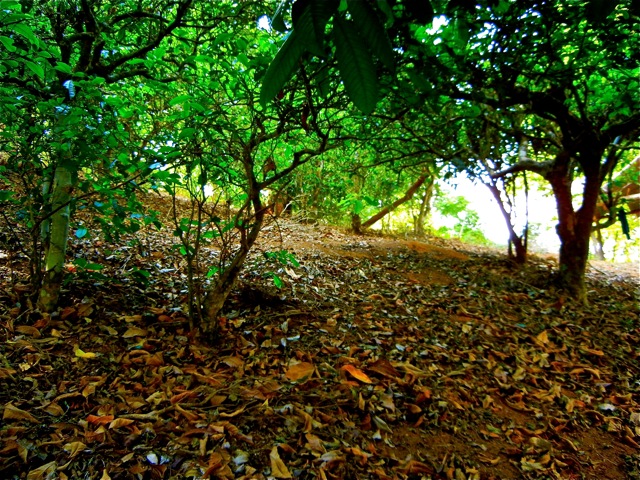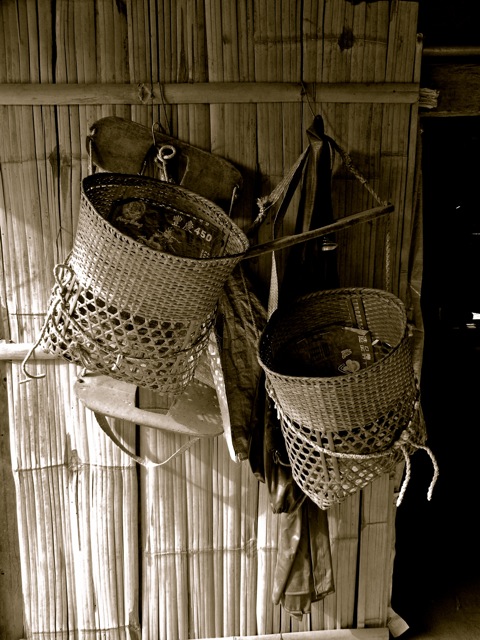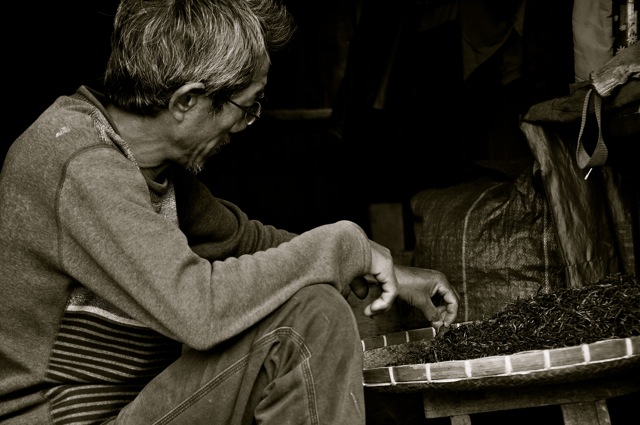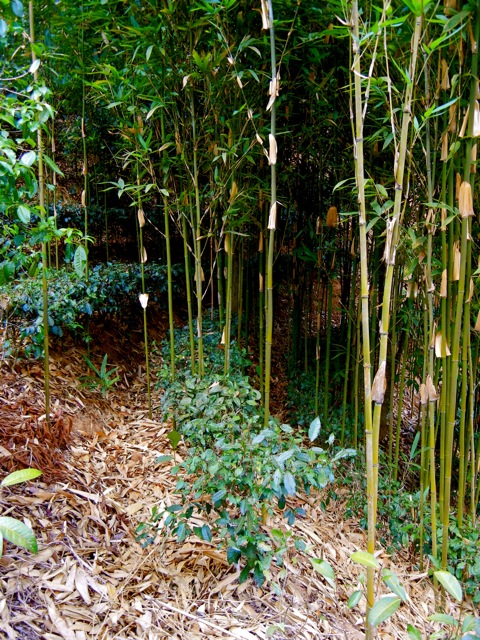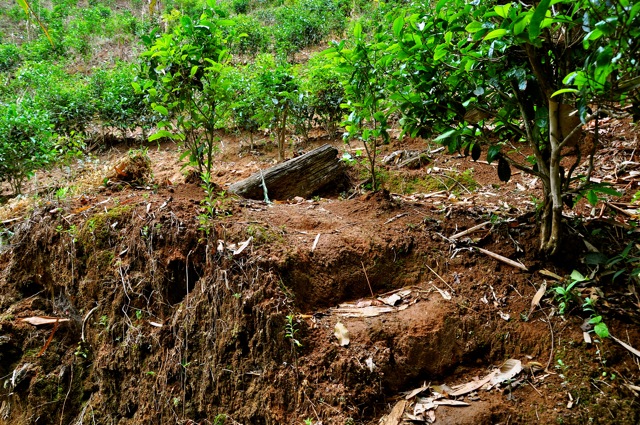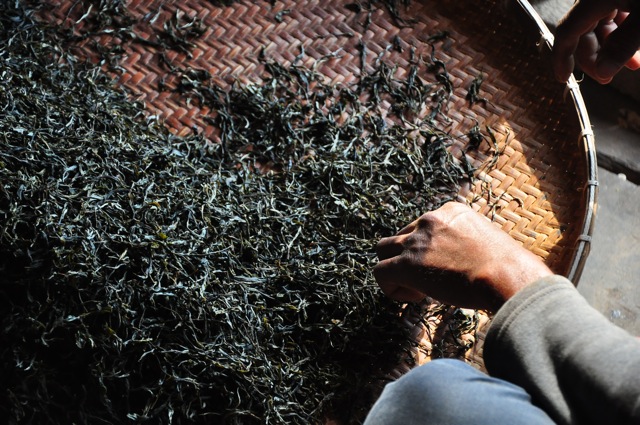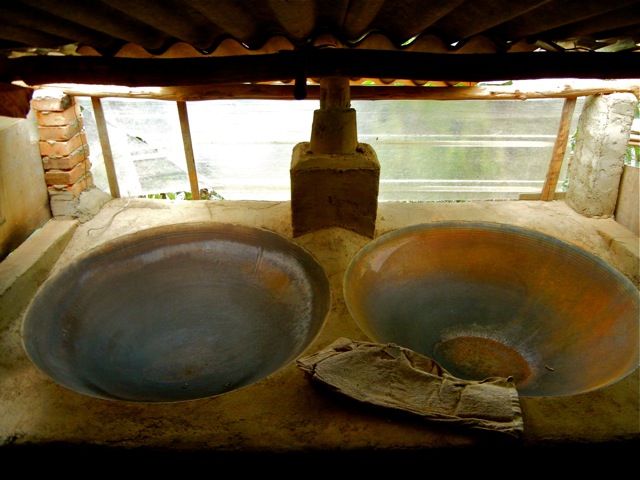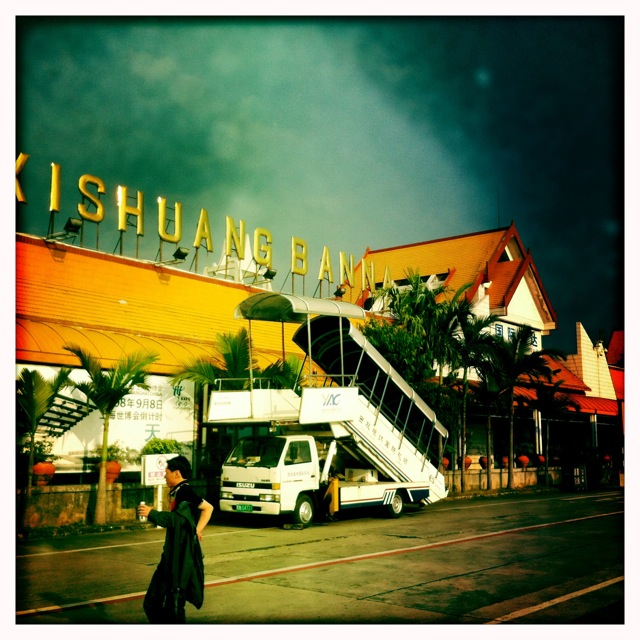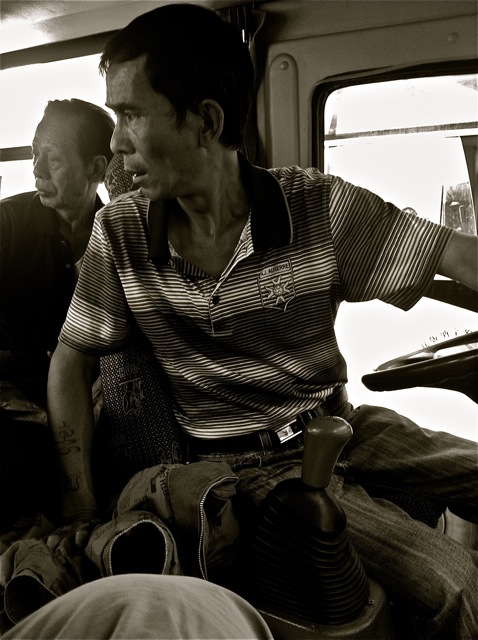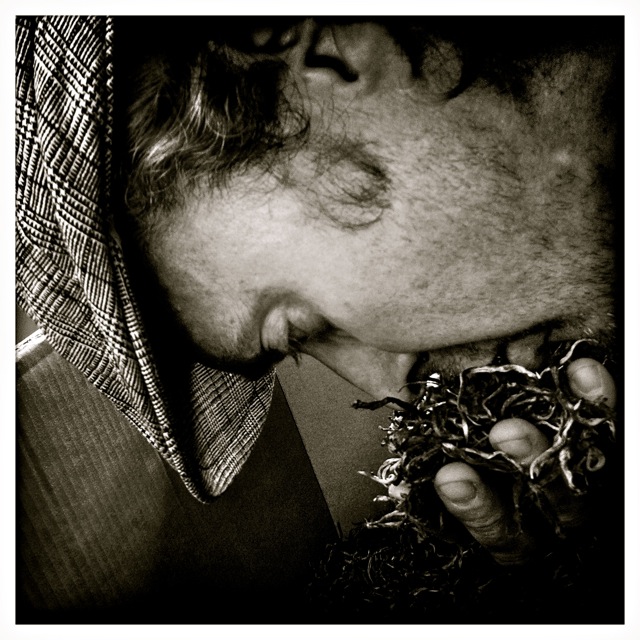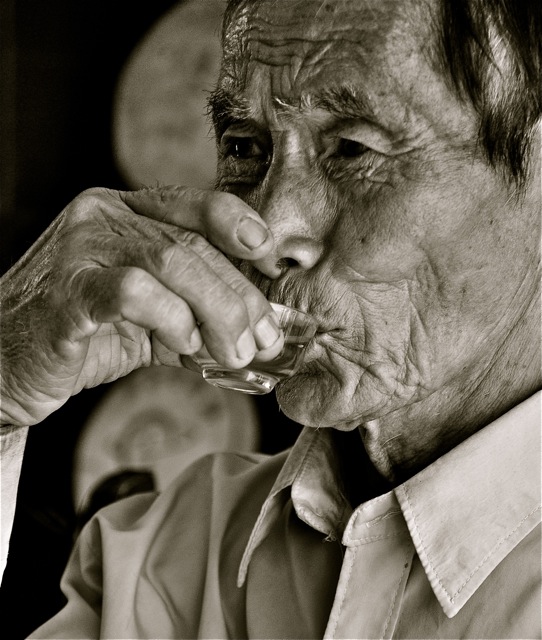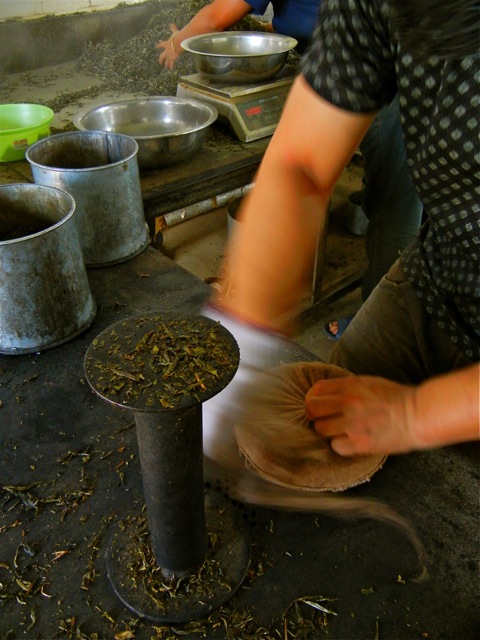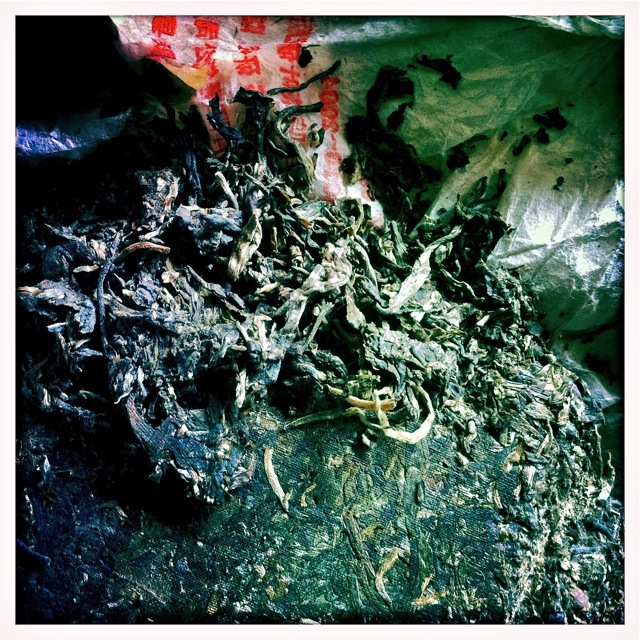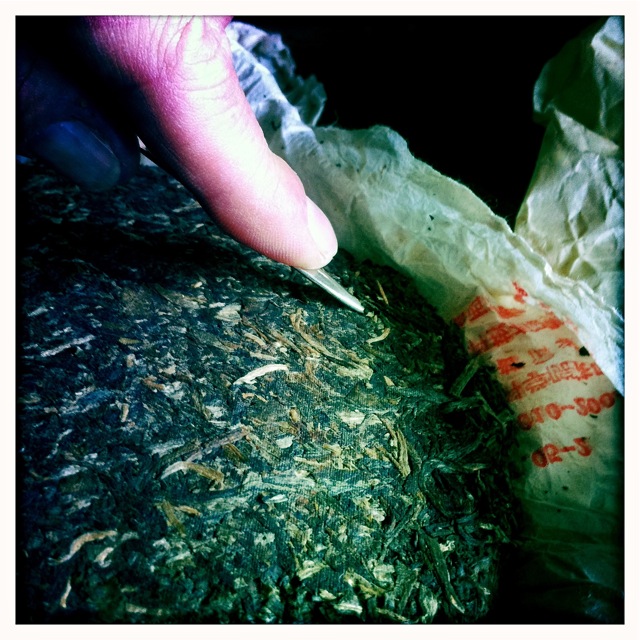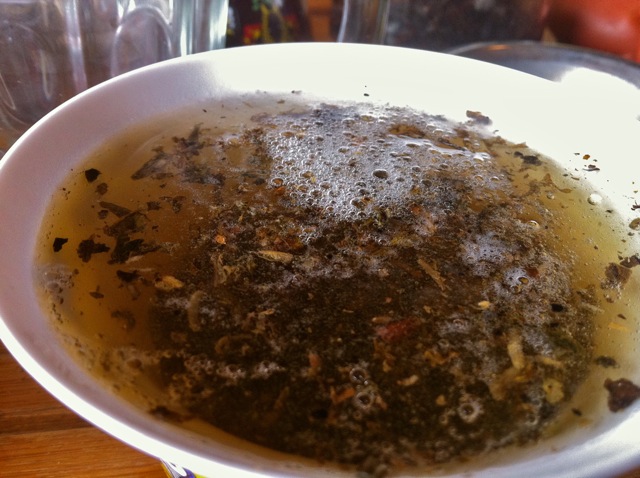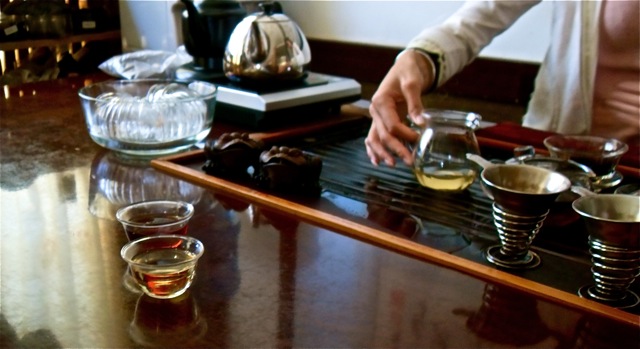Few things bring people to concur like trees do. We need more of them everywhere and of every kind, and when the trees happen to be tea trees, there is the added bonus of the ‘sips’ and stimulant-wonder that they will provide. Jingmai provides tea trees in quantities and quality that convinces one that there might just be a corner of the world where one can sit amidst green, sipping the green, in a buzzed state of perpetual tea-high.
Jingmai’s main ‘tea forest’, one of the planet’s largest, hovers between 1100 and 1500 meters and lies just above the little tea-raging town of Jingmai. Our little Nissan screams its way up the winding road and suddenly we are within the tea forests’ grip. Both sides of the road encase us in tea’s landscape. In other tea forests I’ve passed through, the forests are more organic, hiding the tea trees within other green life forces. Here it is as though tea has banished all others while it builds up a pure empire of itself. It staggers. From where my little group of locals lands, a series of paths spread like veins out into the forest, and we can hear the little calls of distant tea pickers. The sun disappears in the shadowed pathways, which are covered in leaves and lead over the rises. Here and there giant trees that aren’t tea, shoot through the tea forest’s canopy of light green. Taking one path with one of our hosts, Mr. Guo we ascend up and over a rise to a depressed valley that sort of hides and the little chirps and laughs of tea pickers pick up in volume.
Topped with wide brimmed hats against the sun the pickers are in full voice and there is rarely a break in the comments, laughs, screams and taunts. A half dozen women of the Hani group clip leaves at the base of the trees and a few others stand upon tea branches meters off the ground harvesting up higher. Though the forest is almost entirely ‘owned’ by the Dai people, other minorities like the Hani, Lahu, and Pulang have long been tenants on the land able to harvest certain areas at certain times. It is one of the generous points of the indigenous tea peoples that they allow others onto their lands as long as agreements are kept.
All harvesters are careful not to over harvest and these women seem more intent on having fun than stressing too much about the leaves. One of the women higher up is howling up with laughter heaving back and forth trying to catch her breath. Her compatriots and her are all from the same town so for them to be away from family is the time for a little lightness and a lot of gossip. The sun is bludgeoning us from above and the trees appear brighter colored and lighter barked than the duller colored brutes further east. I wonder if the lighter colored taste of the Jingmai is partially related to these more delicate trees. They wander less erratically too, preferring to reach straight up towards the sky. I ask Mr. Guo, long a Jingmai defender in all of its forms about this and his words echo what I’ve so often heard from those who know the leaf intimately, “The sun is important, but the soil is the most important.
It is the soil and the species which determines 80% percent of the taste. The rest is for the tongue to decide”. I wonder what Mr. Bo’s wife would say to these words. The head teamaker’s wife back in Jingmai would no doubt insist that the producer had a great role to play in the tea’s final quality. When direct sun hits the leaves for too long a period, days in succession, many say that the flavonoids and contributors of taste within and upon the leaves, are developed too quickly.
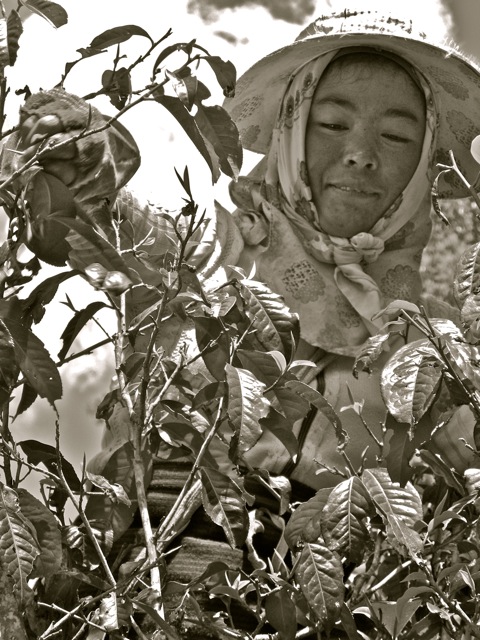
A Dai picker high above snips and clips. The local Dai have first rights to the best and oldest trees being the 'majority minority' in the area. Lahu, Pulang, and Hani have access to smaller plots
Only mists and shadows allow the slow development of a tea’s real potential. These teas (it is said by many drinkers) give a couple of good servings and that is it. Mr. Guo would say (and has said many times) that every tea has its time, its detractors, and its character. In some ways this trip is not only for me to see the trees, it is a trip for him to convince me that Jingmai tea is worth my devoted (and devout) attentions and love. He is very aware of my tendency to prefer the teas that carry bitter blasts into my mouth and he is also aware that Jingmai teas have never dug an ecstatic “ooooooo!!!” out of me.
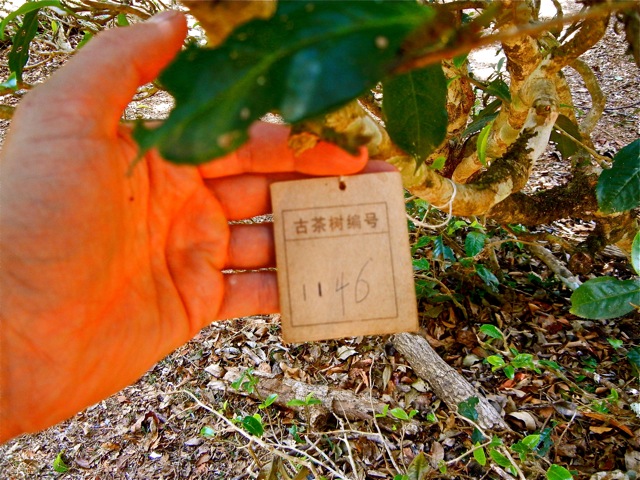
The number of the tree will coincide with a log book's info on harvest size, age of tree, health and observations over the years
One of the aspects of regional teas is their character, which when sipping good examples with a tongue that enjoys, can be very diverse and wonderful. Another human and inevitable aspect is that each tea has its proponents and critics who live and die by their preferred teas. These people differ from drinkers of tea who are simply happy to drink any and every tea that is ever served to them. A real drinker will defend, explain, and expostulate about their favorites and never back down from a healthy ‘discussion’. Mr. Guo is one of Jingmai’s great supporters with a temper that at times hinders his ability to communicate his very great knowledge of about Jingmai. Around us in the thousands are the trees that provide the raw product for the tea. Mr. Guo is well aware that he is impossibly bias, but can do nothing to help himself. He waxes eloquent about the statuesque beauty of the trees, the leaves, and the harvesters. His issue with me after two years remains the same. He is infuriated with my admission that while liking Jingmai, I don’t consider it a favorite or classic. At times I’m convinced that he would prefer that I flat out dislike the tea, rather than my ‘in-between’ feelings about it. As we pass by more pickers offer us up greetings with more laughs. One picker hands Mr. Guo and I handfuls of young nubile leaves, with Mr. Guo going on about the “perfection” of the shape and I decide to aggravate him by saying these leaves are no more perfect than those I’ve seen on other of my tea ramblings throughout Asia. Strangely, he doesn’t take the bait and tells me quietly that “Other leaves, from other areas do not produce Jingmai”. Jingmai’s frying, which comes after a picking and withering is done usually at slightly less intense temperatures of heat and often done for slightly less time which allows the more delicate leaf variety not be obliterated.
Passing over a rise and deeper still into the two of us start chewing our raw leaf gifts. At one point he looks over and suggests we head back and find the others of our group that we haven’t seen in over an hour. I tell him it might be good to get back to the village for a taste of some of the tea leaves we stand amidst. His eyes soften and I know he – as he always does – hopes that perhaps at long last I’m ready to become a complete convert to the Jingmai, for with tea it is inevitably the sips that will decide.

